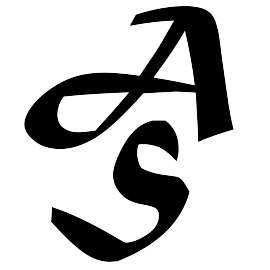Said noone ever “I wish I had shot that photo in lower resolution.”
Hmmmm. Lets explore that quote for a minute. What is resolution? What is DPI, and how does that compare with PPI? There are many terms associated with the term “resolution”. In fact, did you know that there are many different meanings for resolution? There is audio resolution, optical resolution, print resolution, algebra resolution (logic), music resolution…and the list goes on. For my purposes today, I am discussing print and/or optical resolution.
Before I tell you why all of this is important, lets understand some terminology.
DPI (Dots Per Inch) – DPI is used to describe the resolution number of dots per inch in a digital print and the printing resolution of a hard copy print dot gain, which is the increase in the size of the halftone dots during printing. This is caused by the spreading of ink on the surface of the media. (Wikipedia).
To simplify, this term is typically used with regard to printing, whether on a copier, your printer, or on a printing press.
PPI (Pixels Per Inch) – Pixels per inch (PPI) or pixels per centimeter (PPCM) is a measurement of the pixel density (resolution) of an electronic image device, such as a computer monitor or television display, or image digitizing device such as a camera or image scanner. Horizontal and vertical density are usually the same, as most devices have square pixels, but differ on devices that have non-square pixels. (Wikipedia).
To simplify, this term is typically used with regard to computer monitors and digital still and video cameras.
Pixelated/Pixelation – In computer graphics, pixelation (or pixellation in British English) is caused by displaying a bitmap or a section of a bitmap at such a large size that individual pixels, small single-colored square display elements that comprise the bitmap, are visible. Such an image is said to be pixelated (pixellated in the UK).
To the laymen, when a low resolution image is blown up beyond it’s intended resolution, a computer will “interpolate”, meaning take it’s best guess as to what colors a particular pixel should be that didn’t exist in the original photo. When the photo is blown up, something must be placed where something didn’t exist before. Hence, interpolation. This result looks like fuzziness or odd colors or shapes. This is generally not a desired option. Computers don’t always guess well.
I don’t need to recreate the wheel, so in this article, I will not go into a full explanation about how camera resolution is calculated. If you would like to know that, this is a really good article: https://photographylife.com/camera-resolution-explained . Please check it out.
My goal is to describe a couple of problems that arise when people don’t understand photography (or video) with regard to printing projects and internet web sites, and then give you the resulting solutions.
First, the higher the resolution of a photograph, the larger the print in general. It also means the larger the file size. Yet, the first inclination of people that I work with is to provide me with low resolution photos, and then want to blow those pictures up into billboard-sized prints. That presents #1 problem.
“How do you get small pictures to a larger size?”
The answer to that is an entire class in itself. But let me answer that in the order of preferred answers:
- Option 1 (Most preferred). Shoot your photos at the highest resolution that your camera and lenses are capable of to begin with. (Optical resolution). You can always reduce the image as necessary, but it is really difficult to take a small image and make it bigger without loosing quality. Don’t forget that “focus” is just as important as resolution. “Framing” your shot is also important, but that may be corrected at the production stage. The bigger the image that you want, the higher your resolution should be. Cell phone photos are good up close up, and to a certain resolution. But with tiny optical lenses. When a cell phone zooms in, it is generally utilizing interpolation, rather than optical resolution. Not good.
- Option 2. Print pictures and negatives can be scanned (digitized), and through manipulation, they can be transformed into the appropriate resolution. There is typically some loss in picture quality. The better the scanner used, the better the results will likely be. Price for this service increases with the quality of the scan. You should consider what your desired output is for the photography, and then decide on the quality of the scan accordingly. (I will discuss this in more detail later).
- Option 3. Your small photographs can be “rasterized”. That means that your photograph is turned into a mathematical computation, and digitally, it can be increased in size. These may generally loose quality, and it may be noticeable that the photo just doesn’t “feel the same” as the original photo. However, for billboards, which are viewed from a distance (not up close), it may be just fine. However, for print, such as books, flyers and such, it may not be acceptable when viewed up close.
- Option 4. If you have a print of the photo which is in excellent shape, it is possible to take a high resolution photo of the photo, under controlled circumstances, and then you will then have a high resolution digital of the original photo. However, you are at the mercy of the original photograph, which can be enhanced in production.
Finally, lets discuss what “resolutions” are appropriate.
Web site: If your photograph is going to be displayed on a web site, current technology dictates a resolution of 72 ppi, which is good for most current displays and monitors.
Printing: For photographs, at a minimum of 300 dpi is a good guideline.
When you save a photograph using most photo manipulation software such as Photo, Photoshop, Lightroom (and many others), there is typically a “Quality” setting, which, when reduced, decreases the file size (and quality), and when increased, increases the file size (and quality) without changing the size (resolution) of the image. Note that this may involve “compressing” the image, which can reduce overall quality. Again, this may be acceptable for display on the internet, but will likely result in undesirable results for printed output.
It is a balancing act, considering your ultimate goals. It may result in several “versions” of the photograph to be utilized for different purposes.
But when in doubt, always shoot at the highest resolution and quality settings because, Said noone ever “I wish I had shot that photo in lower resolution.”
© 2015, Allen Beck, AKOR Services



